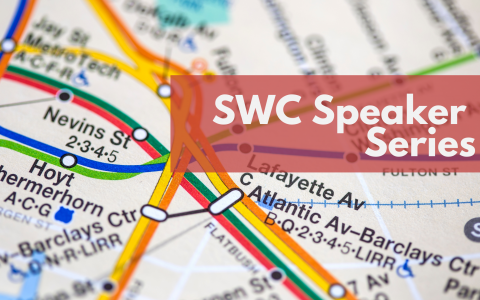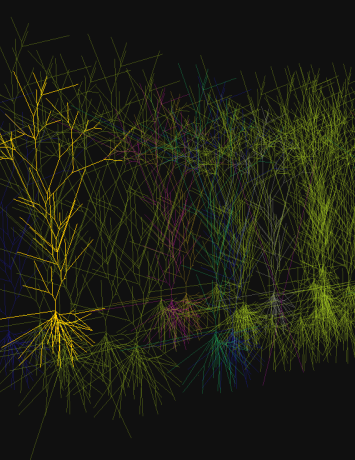
Deciphering the brain’s prediction machine
By April Cashin-Garbutt
Imagine you are walking to your favourite coffee shop. It is a path you have trodden many times and you know what landmarks to expect along the way. But one day something changes. A building that was once a familiar landmark on your route is no longer there. This unexpected event stands out as you experience a discrepancy between what you expected and what actually happened in the world. How does the brain act as a prediction machine and how does it process such unexpected events?
Prediction errors have been the subject of intense study in neuroscience. They are utilized by the brain to update internal models of the world, learn from our actions and interpret incoming sensory information. But despite their importance, it is still debated what information these error signals convey, and, surprisingly little is known about the neural circuit mechanisms responsible for their implementation.
Researchers at the Sainsbury Wellcome Centre at UCL have been studying sensory prediction errors using two-photon calcium imaging and optogenetics to take us a step closer to understanding both the nature of prediction error signals as well as the mechanisms by which they arise.
“We placed mice in a virtual reality environment, where they could navigate along a familiar corridor to get to a strawberry milk reward at the end – essentially their equivalent of going to a coffee shop! The virtual reality environment enabled us to precisely control all sensory input and also allowed us to introduce violations to their predictions on some trials,” said Shohei Furutachi, Senior Research Fellow in the Hofer and Mrsic-Flogel labs at SWC and first author on the study.
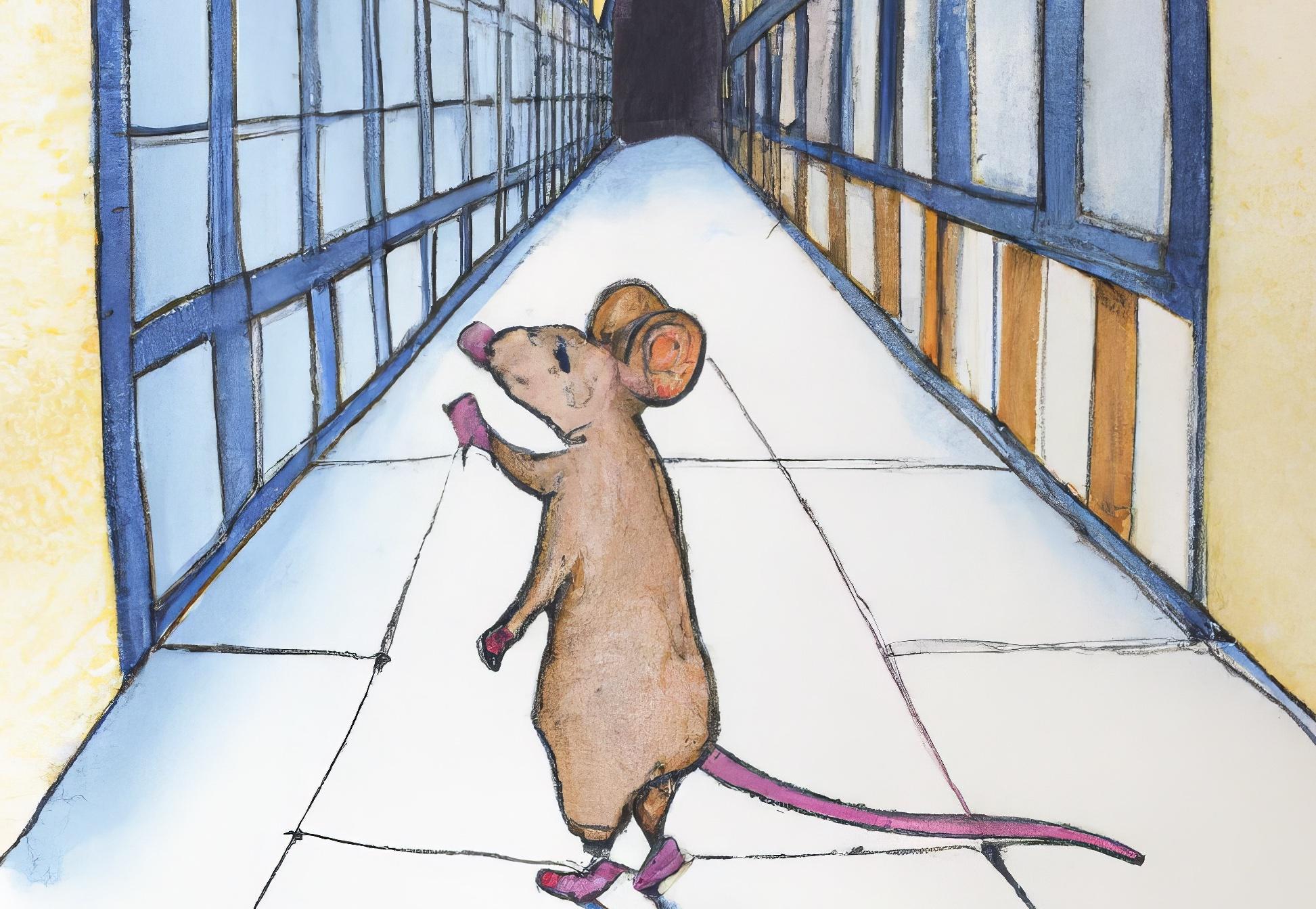
The walls of the virtual corridor that the mice navigated along were decorated with a sequence of grating patterns (grating A – grating B – grating A – grating B). These grating patterns allowed the mice to become familiar with the corridor, so they knew what to expect on each stage of their journey to the reward. You can think of this in the same way as we pass several expected landmarks on the way to our favourite coffee shop. After five days of training, the researchers introduced a novel grating stimulus (grating C) in the fourth position along the corridor in 10% of trials (grating A – grating B – grating A – grating C). This was very unexpected to the mice, in the same way as the change in the building on the way to our coffee shop.
To study how the brain processes these unexpected events, the team used two-photon calcium imaging to record the neural activity of layer 2/3 of the primary visual cortex (V1). The reason they recorded from this area is that V1 is thought to be the place where sensory information from the retina combines with a top-down prediction signal for the first time.
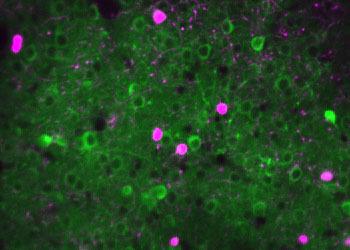
“Previously people believed that prediction error signals encode the content of the difference between expectations and actual input. But surprisingly we found no experimental evidence for this. Instead, we discovered that the brain amplifies the responses of neurons that are most selective for the unexpected sensory input and so the error signal we observe is a consequence of this selective amplification,” explained Furutachi.
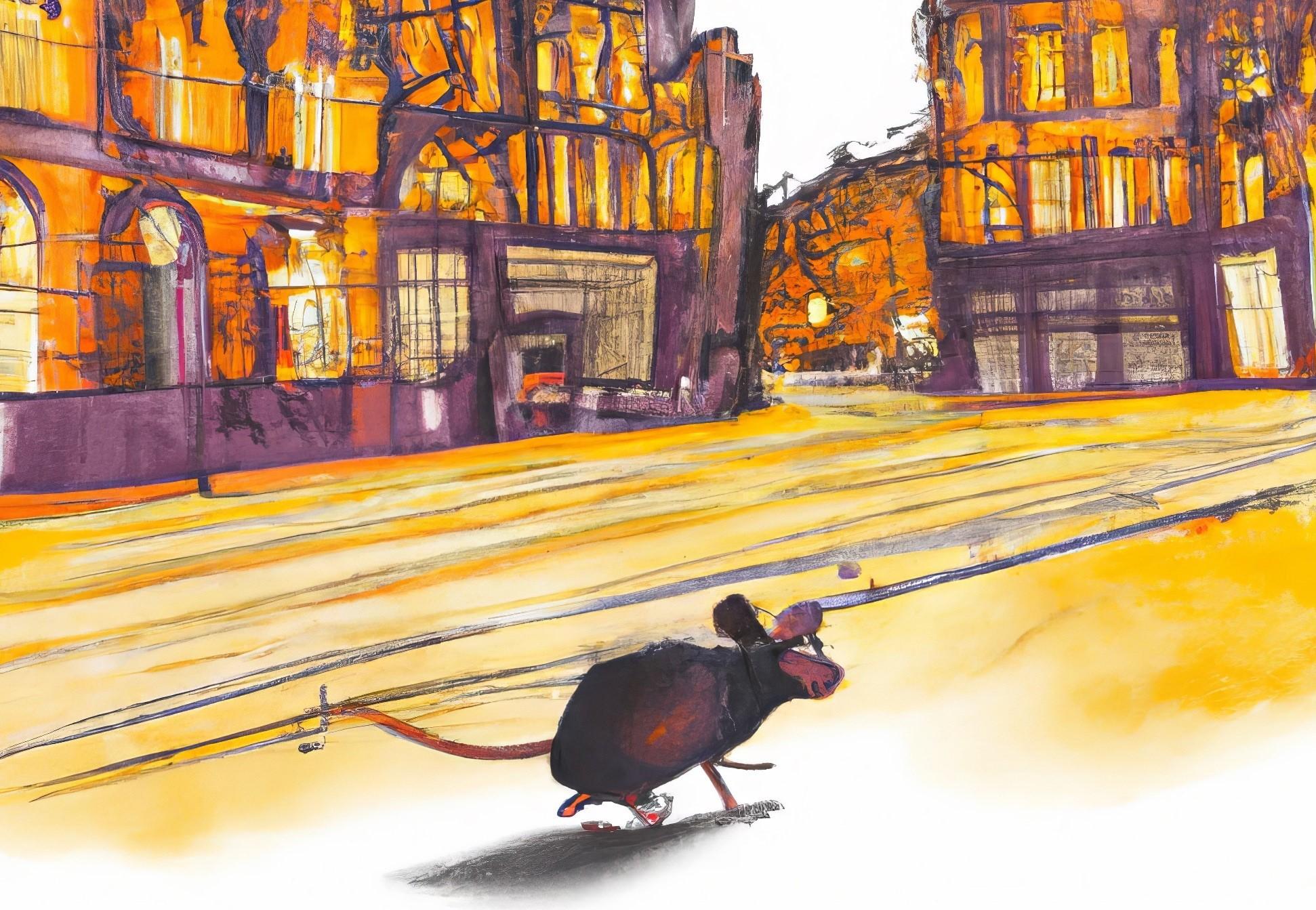
How is this selective amplification of the unexpected sensory input achieved? Vasoactive intestinal polypeptide (VIP)-expressing inhibitory interneurons in V1 receive cortical top-down and neuromodulatory inputs, providing a circuit for top-down gain modulation of sensory responses. The researchers found that VIP interneurons strongly responded to unexpected sensory input but not to expected sensory input. Furthermore, they discovered the pulvinar, a higher-order thalamic nuclei which integrates information from many cortical and subcortical areas and sends prominent feedback projections to V1, also strongly responded to the unexpected sensory input.
To test the role of these two neural populations, the team inactivated VIP or pulvinar and found that the prediction error signal was reduced. This showed that the recruitment of these two populations is necessary for the generation of the prediction error in the neocortex.
“We wanted to understand why there are two cell populations that contribute to the generation of the sensory prediction error signals. We tried to recreate the sensory prediction error signal in the cortex just by increasing the activity of VIP neurons or pulvinar in the absence of an unexpected event. The results were really interesting as we found that optogenetic activation of VIP or pulvinar alone only had a moderate effect on the cortical sensory responses,” explained Furutachi.
The team observed that the VIP and pulvinar had opposite impacts on the sensory representation. VIP neuron activation slightly increased the neocortical activities, whereas pulvinar activation reduced the activities of neocortical neurons. This was consistent with previous studies. However, when the researchers co-activated pulvinar and VIP neurons, the prediction error signal was created. This showed that sensory prediction error signals are generated through cooperation of pulvinar and VIP interneurons. The two populations were acting synergistically, not additively.
“Our study revealed a previously unknown cooperative thalamocortical circuit mechanism in which the VIP neurons work as a switching board. When VIP neurons are off, pulvinar suppresses the neocortex, but when VIP neurons are on, pulvinar can boost the neocortex. Sensory prediction error signals thus emerge though a collaborative action of neocortex and thalamus” explained Furutachi.
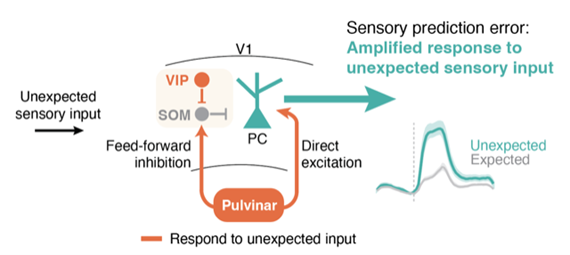
The next steps for the team are to explore how and where in the brain the animals’ predictions are compared with the actual sensory input to compute sensory prediction errors and what are the specific roles of the pulvinar and neocortical VIP neurons during this process.
Find out more
- Read the full preprint in bioRxiv, ‘Cooperative thalamocortical circuit mechanisms for sensory prediction errors’
- Learn more about research in Hofer Lab and Mrsic-Flogel Lab

